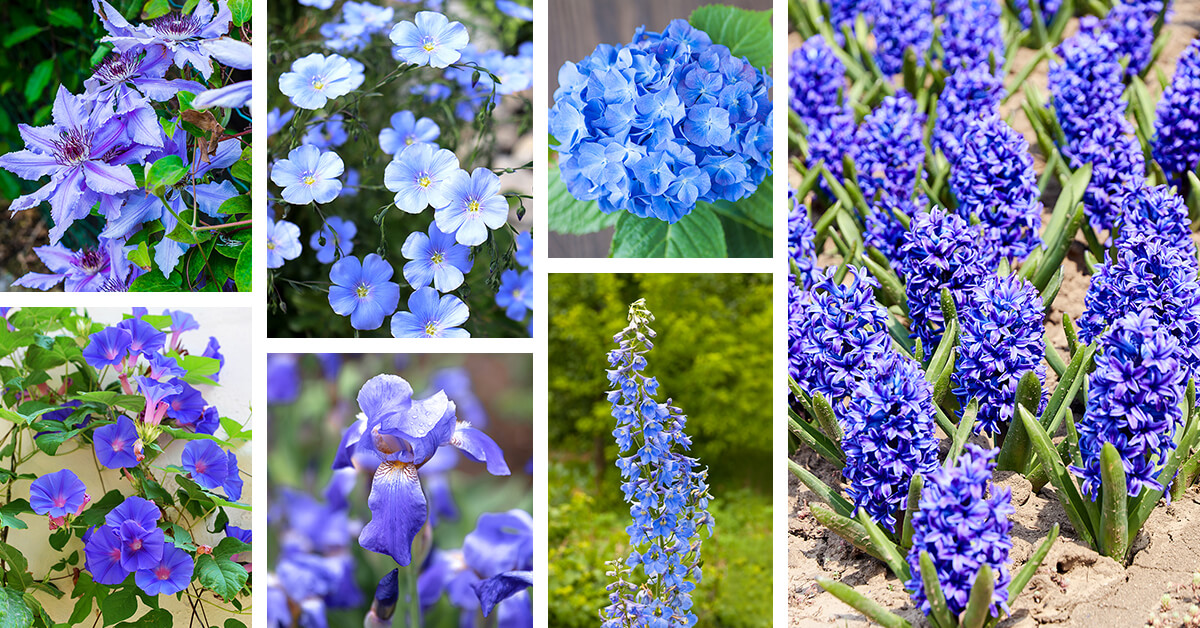Did you ever stop to appreciate the beauty of nature? Well, flowers play an integral role in that beauty. Their colorful landscape invokes powerful feelings of well-being and serenity. Specifically, the focus will be on blue flowers which have amazing shades offering different alternatives that may be you hadn’t even thought of when selecting that certain flower to embellish your garden or home.
27 Uniquely Aesthetic Blue Flowers for Your Outdoor Space
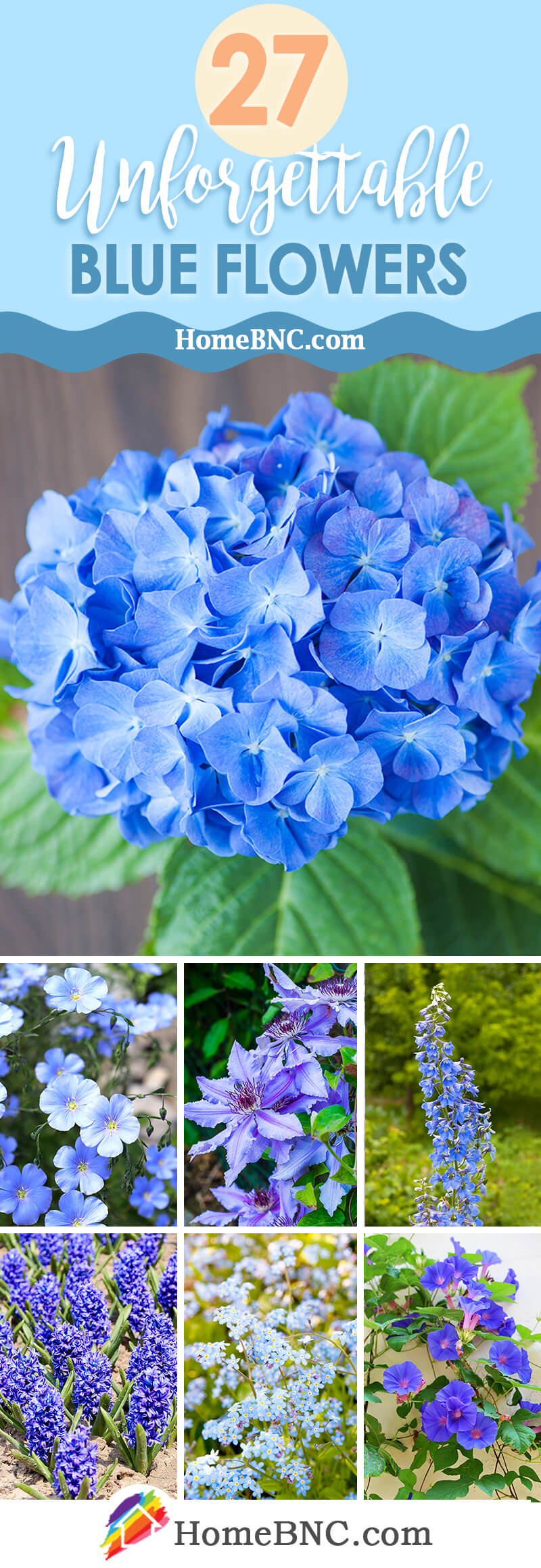
Here’s a comprehensive list of 27 various blue flowers that may pique your interest with the sincere hope that these options will inspire your creativity and make you consider flowers you possibly never thought of or heard of.
1. Hydrangea (Hortensia)
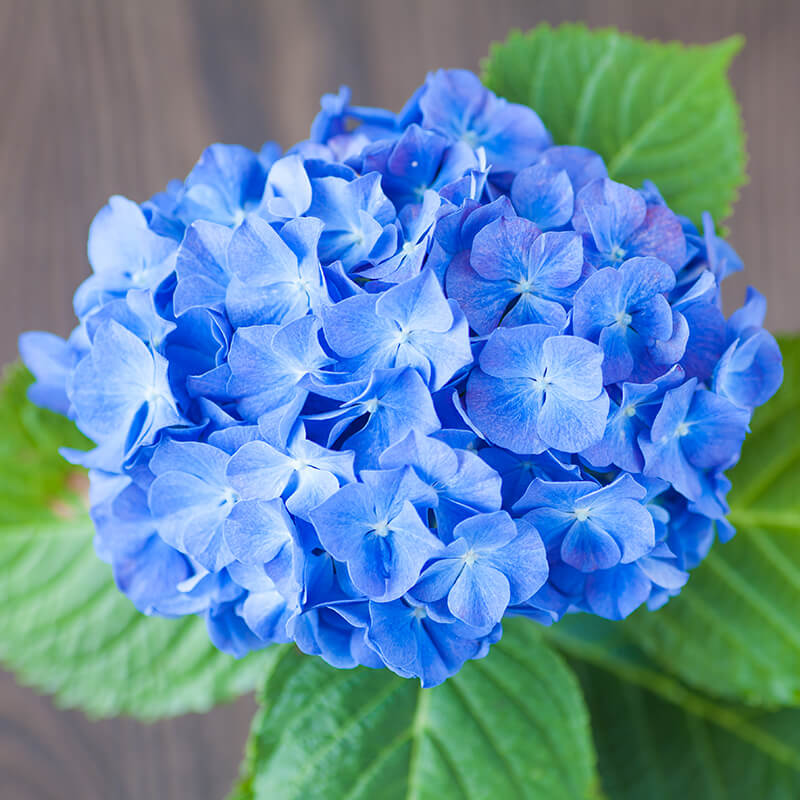
Its azure petals are both softly delicate and plentiful invoking feelings of peaceful tranquility. What makes this blue flower plant special is that it’s one of the few plants that collect aluminum and its color is affected by the appearance of aluminum ions. Acidic soils with a pH of 6.0 or less are high in aluminum causing them to turn a cool blue and purple; their roots absorb a higher level of aluminum. These popular types of blue flower household plant are also popular in funeral flower arrangements symbolizes genealogy, gratefulness, honest emotions, and persevering love. It evokes positive emotions for those who are held close like family which could be a good reason why they are considered a suitable memorial arrangement. The good thing about this plant is it grows in a large range of zones; namely 3-9 thriving in moist, well-drained soil from Spring, Summer, and Autumn. Another plus is this blue flower plant is low maintenance; only needing limited sunlight with average watering needs.
2. Blue Rose (Rosa)
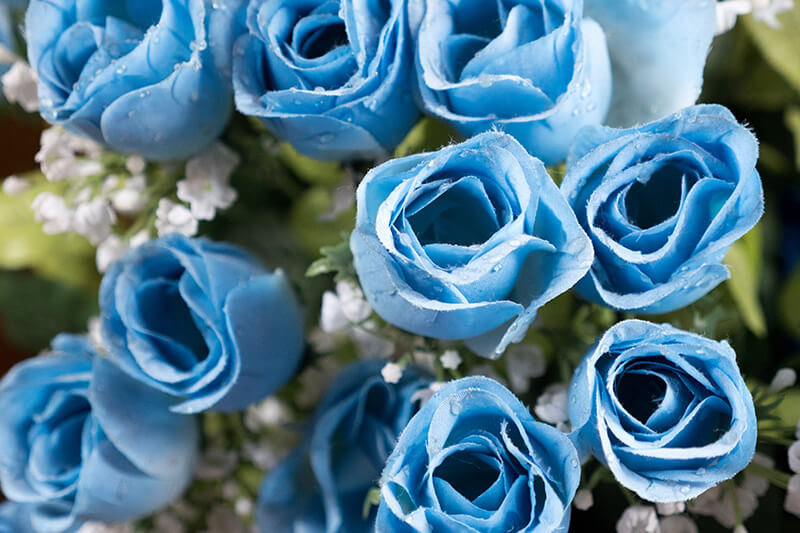
Roses may be the oldest known flower that is 35 million years old and cultivated for thousands of years, according to the University of Illinois Extension program with the oldest Rose fossils found in Colorado, in the US. This classic type of blue flower has fragrant, richly deep-colored petals. The most popular, sacredly held flower in the world symbolizing love that comes in a variety of colors, each having a specific meaning. Specifically, the Blue Rose’s meaning is “mystery or something desired but unattainable”.
Other names for the rare flower are ‘Bleu Violet’ and ‘Blue Rosalie’ were adopted when hybridized in 1909 by Johann Christoph Schmidt. Attributes of the flower are the ability to grow in full or partial sun during Spring, Summer, and Autumn in zones 2 – 10. With an average amount of watering, it does best in moist, well-drained soil with a broad pH range between 5.5 – 7.0.
3. Orchid (Vanda Coerulea)
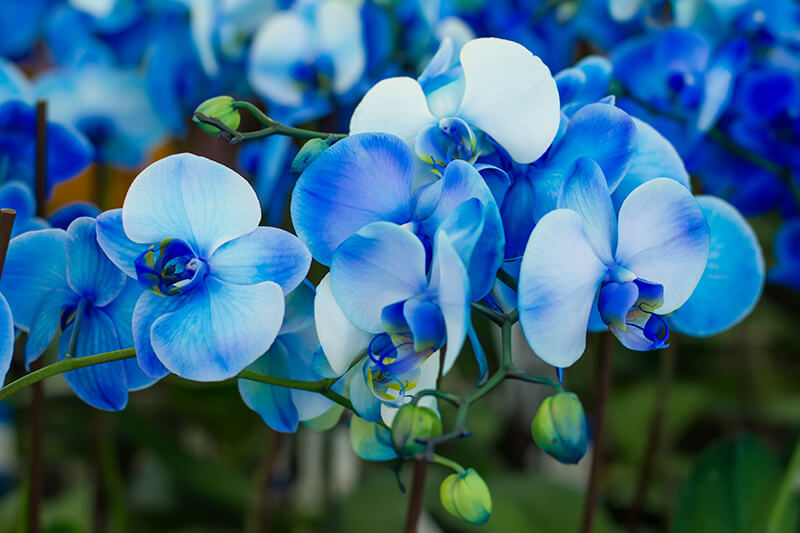
Also referred to as a corsage flower, this type of blue flower is a delicately rare flower. The beauty and fragrance of the blue flower plant contribute to its uniqueness. These types of blue flower plant also complements modern home decor perfectly as a Phalaenopsis orchid, or ornamental. Some are indigenous to Southeast Asia and Australia. Symbolic of beauty, love, and fertility, this perennial’s hardiness zoning is between 10 and 13. It blooms all year growing naturally on forest floors or accompanying another plant. When cultivating indoors, a special soil mix for orchids is necessary for optimal growth. Surprisingly, the blue orchid’s medium in maintenance; requiring average watering benefitting from both full and partial sunlight. A perfect ornamental flower in fashion and interior design.
4. Blue Dahlia
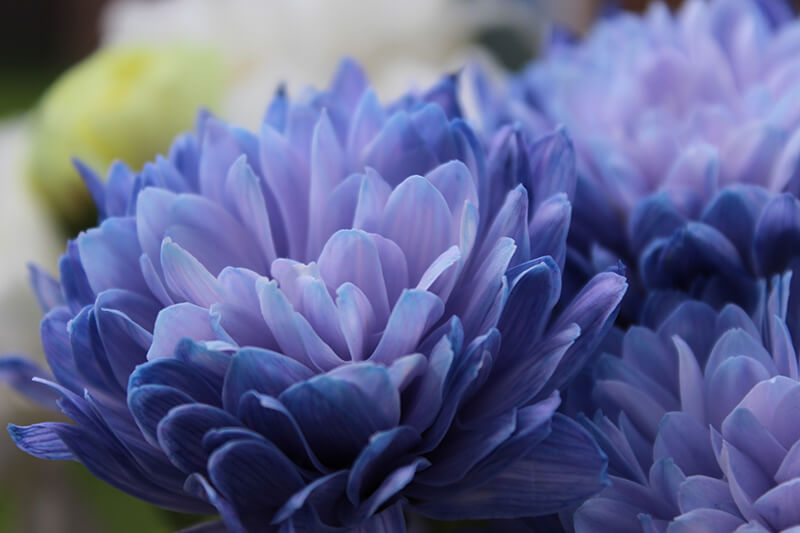
This blue flower plant with its funnel-shaped petals offers a full bloom. Its name is said to have derived from the Swedish botanist Anders Dahl who discovered it. Several regions have adopted it as their official flower including Mexico. Historically, the rarity of producing this color has garnered cash prizes to the victor with one minimal success. The symbolic meaning is impossibility or inaccessibility is due to its uncommonness. When in moist soil that’s slightly acidic and given full sunlight with adequate watering, the plant flourishes. Outdoors it blooms in two seasons: Summer and Autumn in zones 3 – 11.
5. Lotus (Nelumbo)
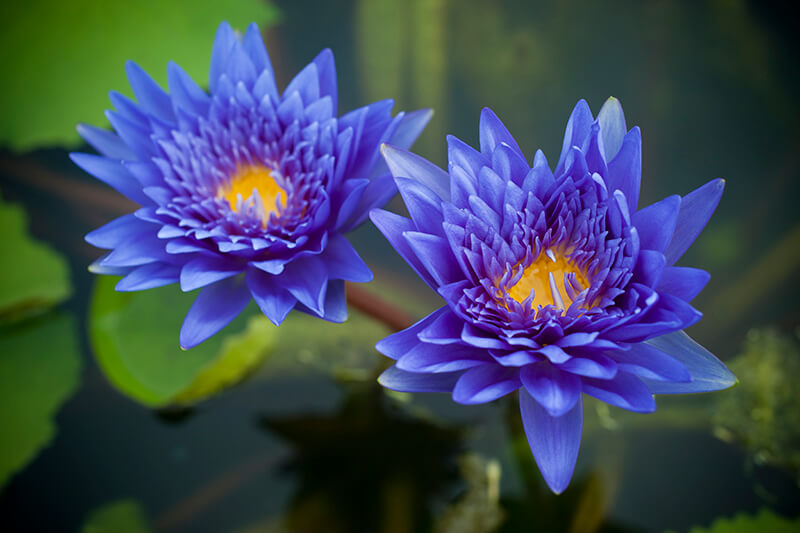
This beautiful aquatic type of blue flower has different ornamental uses including food and beverage adornment– a great embellishment. It is considered sacred in some regions and the blue flower plant is rare adding to its uniqueness. The Blue Lotus conveys serenity, purity, wealth, and beauty. A perennial plant, this can be grown in rich, chalky soil with a 6.5 – 8.0 pH during The spring and summer months. This is also another flower that is low maintenance requiring average watering, but it thrives best with full sunlight. To ensure optimal growth, plant within a zoning range between 4 and 10.
6. Blue Chrysanthemum
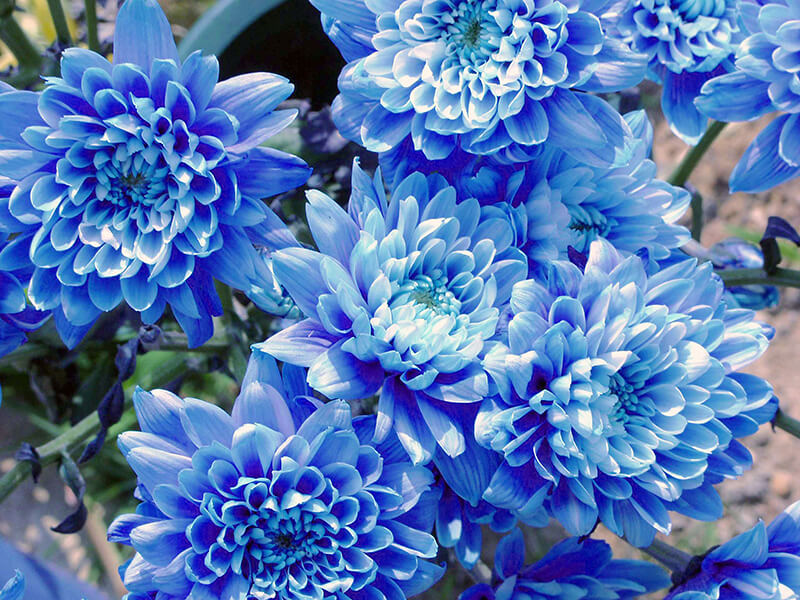
One of the most popular flowers, the Mum is native to Europe and Asia. In fact, it is the national flower of Japan. In addition, it’s also considered the unofficial Mother’s Day flower of Australia. This is another great flower for decorative uses. With full sunlight, in a zone range of 4 – 11 between Spring and Autumn, this unique flower will do well. The soil should have a pH level of 6.0 – 7.0 in addition to being moistly well-drained. Adequate watering with average maintenance also helps sustain plant life.
7. Water Lily (Nymphaea Nouchali)
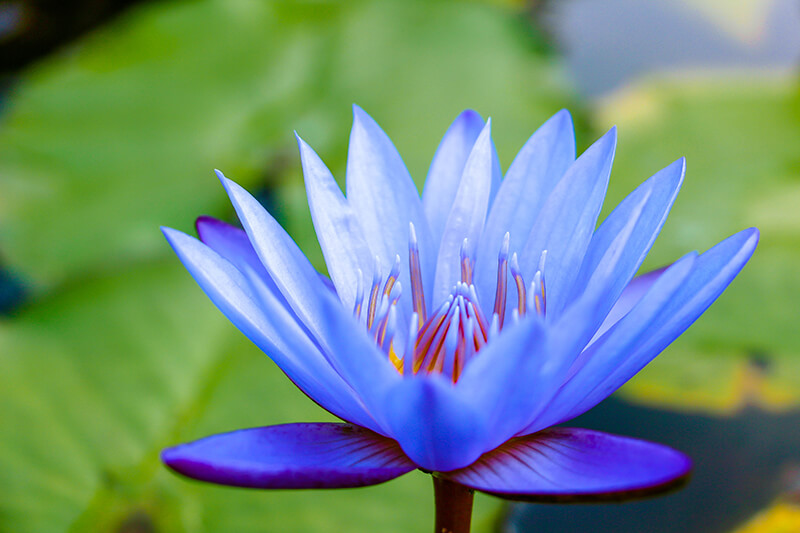
They are cool types of blue flower plant living in water, one of its unique attributes. Another rare attribute is that it opens in the day, and closes at night. In the US, it’s known as July’s birth flower popularly thriving in warmer climates. The water lily exemplifies unity and balance even being considered sacred in some religions. It also represents rebirth and fertility. The optimal growth occurs in zones 9 – 11. With a little extra effort, they can be cultivated to be grown adorning any outdoor pond.
8. Hyacinth (Hycinthicus)
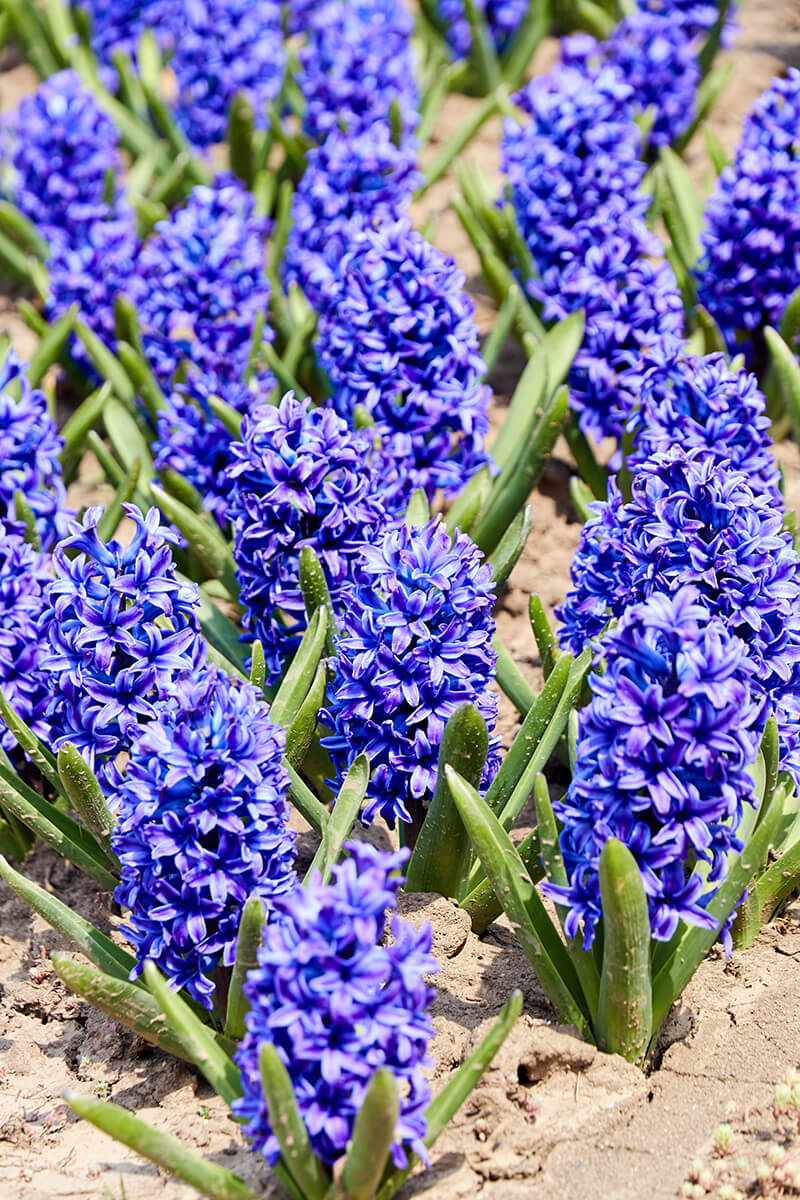
This unique blue flower plant is heavenly scented so much so that it’s used in perfumes. It even has a special day dedicated to its existence called World Hyacinth Day on March 7th. Don’t attempt to eat it though, as these type of blue flowers are toxic to humans and animals. This particular flower has various meanings: namely spring, rebirth, sport, sorrow, and regret. Only blooming in the Spring, in zones 4 – 8 with average watering, maintenance is minimal. Well-drained, moist soil that’s neutral to slightly acidic is needed for the best results.
9. Blue Grape Hyacinth (Muscari)
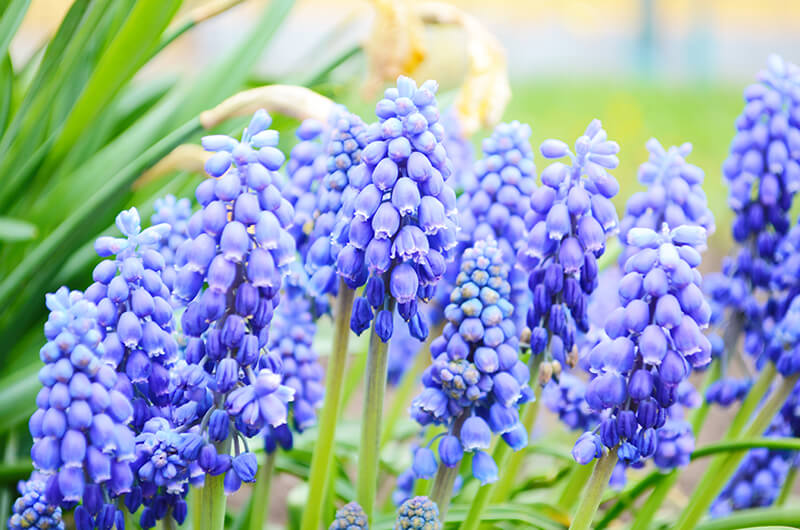
These cool plants have grape-like bulbs similar to the fruit. The difference with this flower is that they are edible– not poisonous compared to the Hyacinth. Amazingly enough, they can even be pickled in vinegar! They exemplify power confidence, mystery, and creativity. Growing only in the Spring in zones 4 – 9, they are low maintenance requiring moist, well-drained soil in full or partial sunlight.
10. Iris
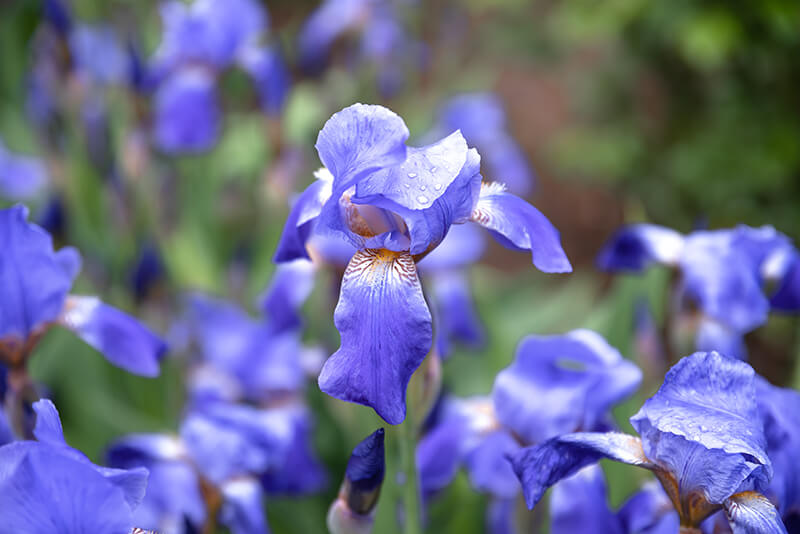
A beautifully unique blue flower plant, it’s also used for perfuming perfect for accenting decor. It is an art inspiring flower. The symbolism is a rainbow; a symbol of purity, faith, and hope; also means blueblood or a noble. Unlike other flowering plants, this one grows in all seasons within zones 3 – 9. The soil necessary for best results is moist, well-drained but slightly acidic. Its minimal upkeep requires standard watering within either full or partial sun.
11. Cornflower (Centaurea)
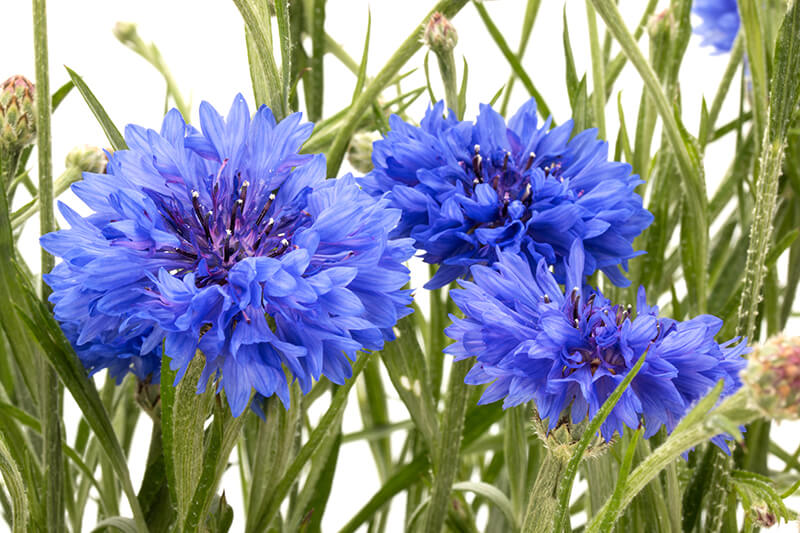
Also called Basket Flower and Bachelor’s Button, this was JFK’s favorite flower wearing it on his lapel when he wedded Jackie Kennedy. Probably one of the coolest blue-on-blue flowers ever! What’s rare is this flower is both annual and perennial, though only growing two times of the year, Spring and Summer preferably in zones 2 – 11. In total or partial sunlight, it can adapt to poor soil as long as it’s moist and rich. Its pH should be between 5.5-7.0. With those criteria, the upkeep will be to a minimum.
12. Dogbane (Oleander)
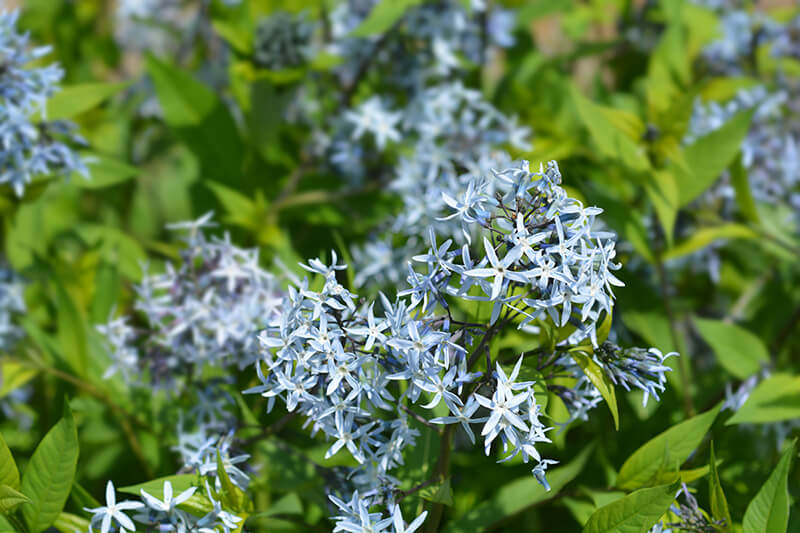
Considered a great garden plant, it is said to resemble an olive tree because of its similarly shaped leaves. The genus is both a shrub and a tree adding to its versatility. It symbolizes desire, romance, charm, also destiny, and caution. The best seasons for growth are Spring, Summer, and Fall in a zone range of 8 – 11. The Dogbane can survive long-term growth under different conditions.
13. Clematis
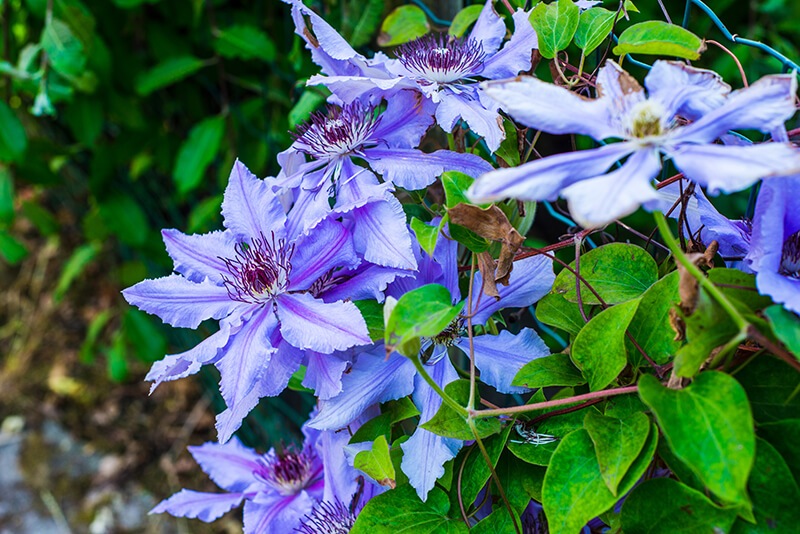
Also called Leather Flower, Traveler’s Joy, Old Man’s Beard, its origin is a “climbing plant” with vine-like qualities. It can also be considered a shrub and a perennial. Clematis is a toxic plant to humans and animals, possibly causing dermatitis. The symbolism includes deceit, ingenuity, and pulchritude. With full and partial sun, in moist, rich soil ranging from 5.5 – 7.0 pH, the plant will do well. Zone range is broad, between 3 – 11; low maintenance and normal watering.
14. Delphinium (Larkspur)
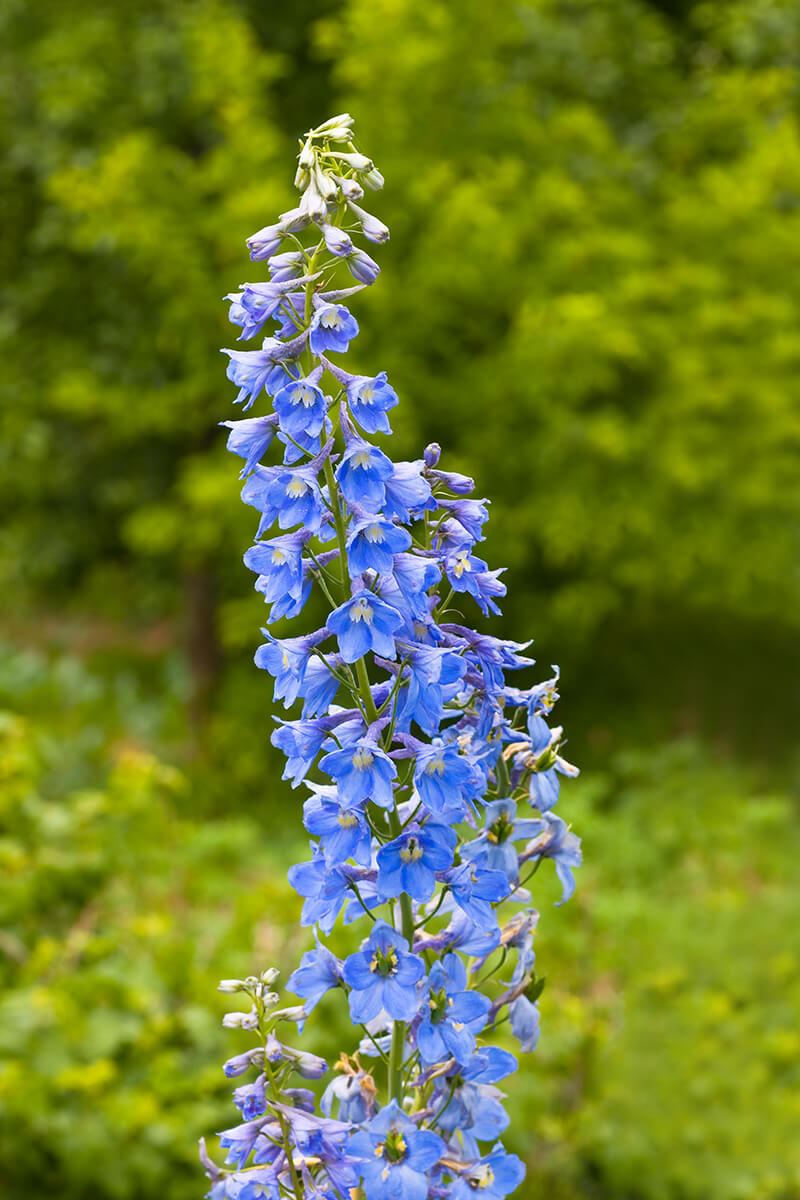
A stalk-like, spiky, unique blue flower, its species has been found in the Northern Hemisphere and some in Africa. The plant is the most popular color in the genus. Historically, it’s been used as a dye and as a sleep aid medicine. Though it symbolizes levity, joy, and fun, it can be toxic causing digestive (if ingested) and skin irritation problems which are far from fun to the sufferer. The good news is the more it grows, the less toxic it becomes. It’s a perennial growing in the Summer and Autumn within zones 3 -7. The soil should be moist, rich with a neutral to slightly acidic pH watered normally. Full and partial sun is also needed for optimal growth.
15. Geranium (Cranesbills)
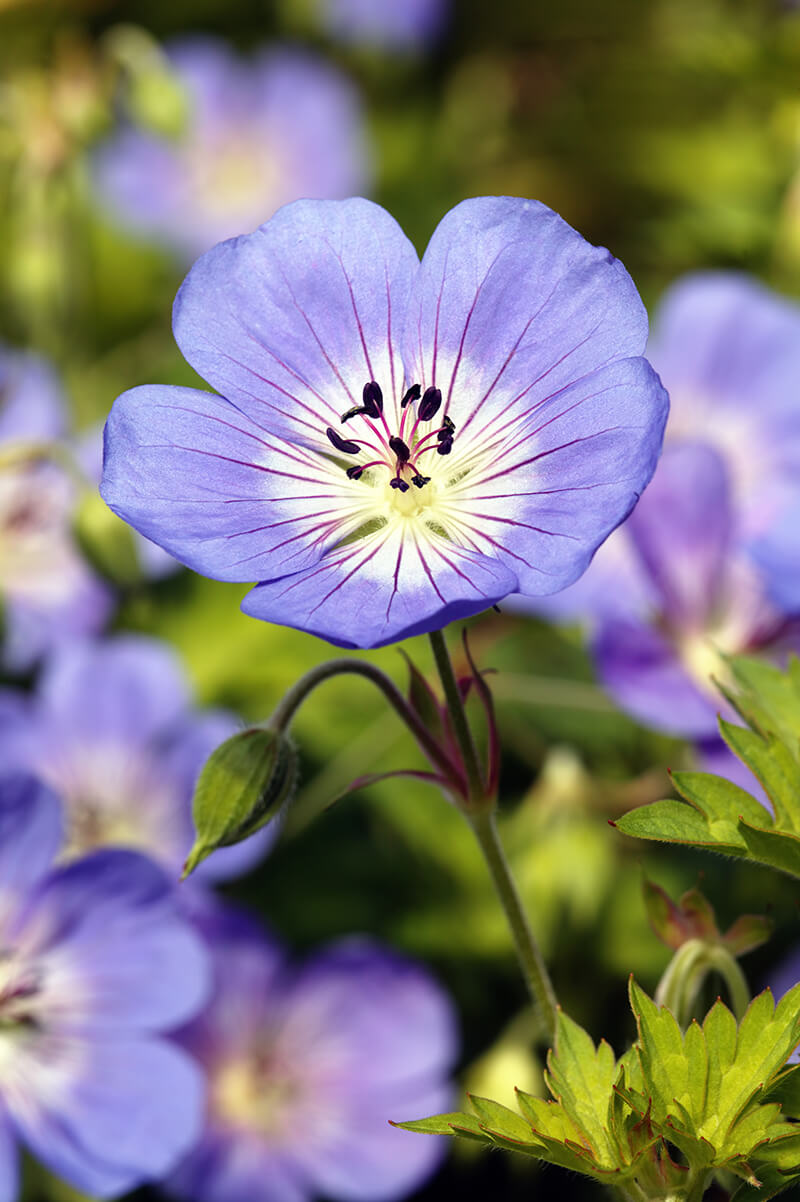
This eye-catching, easily grown plant is one of the most popular to be grown today. It is commonly used in beds, borders, and containers. The popularity is also in its fragrance, commonly used as an essential oil for homeopathic and perfuming purposes. The dried leaves can even be used as herbal tea. Can represent friendship, happiness, and positivity. Mainly grown from Spring to Autumn, the hardiness zones are 2 – 10 blooming from Spring to Autumn. They’ll grow in virtually any kind of soil, but the pH should be slightly acidic for best results. Its low maintenance needs normal watering and both full or partial sunlight.
16. Blue Periwinkle (Vinca)
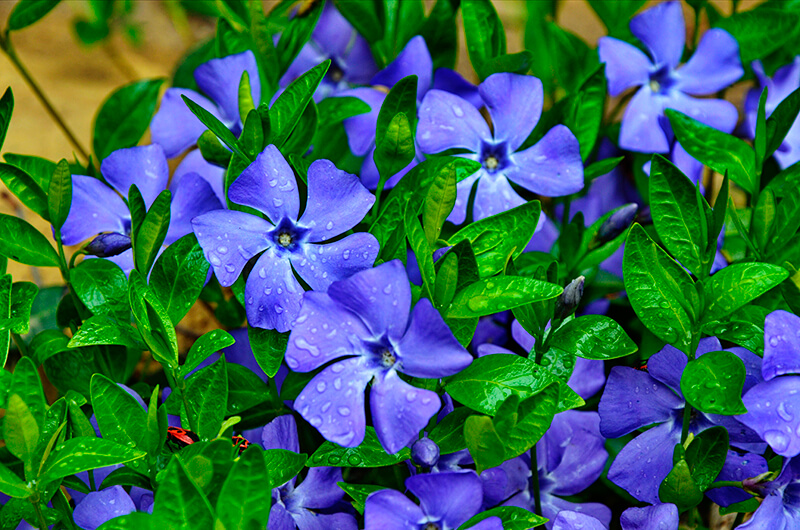
This pinwheel-looking flower is another perfect for beds and borders. These unique flowers are perfect for bouquets on special occasions or for adding a decorative effect to your home. Also, it has been used for medicinal purposes to treat colds, coughs, sore throats, and diabetes. It was also used to heal both eye and lung infections. It’s indicative of benevolence, nostalgia, purity, and in contrast, sadness. Being both perennial or shrub, they bloom in summer and fall primarily in zones 3 – 11. The flower does best in moist, but well-drained soil and is adaptable to soils of different pH levels. The sun levels are versatile: full sun, partial sun, and even shade with average, low maintenance aid in their growth’s success.
17. Forget-Me-Nots (Myosotis)

This is normally a small, blue flower though it comes in other colors. The origins of its name are common folklore in countries like France and Germany. It’s the state flower of Alaska even before Alaska became a state! It’s also the flower of the Alzheimer’s Society being used as a symbol of memory loss and the symbol of International Missing Children’s Day. Was also commonly used for medicinal purposes. The plant symbolizes Hope, remembrance, true and undying love. And also is related to death and funerals. It fares well in zones 3 – 9, growing in Spring and Summer months and it performs best in rich, moist, and well-drained soil, with a pH between 5.5 and 7.5. It’s low maintenance needing normal watering thriving in full and/or partial sunlight.
18. Blue Globe Thistle (Echinops)
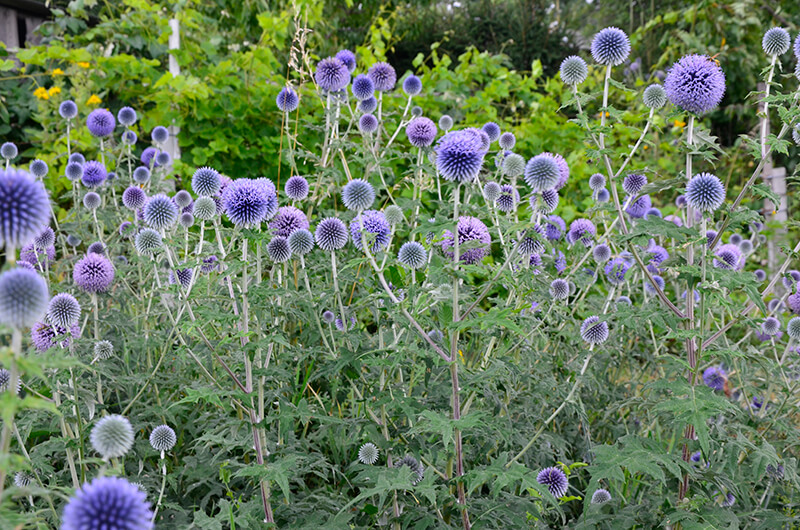
This commonly blue plant resembles a dandelion, but is definitely not as soft! Its sharp spines require garden or utility gloves before handling. Historically, the roots have been used medicinally. It’s symbolic of independence and nobility. This perennial only grows in Summer commonly in zones 3 -9 best in well-drained soil with a pH of 5.5 and 7.0. It’s also a low-maintenance plant needing normal watering thriving in full and/or partial sunlight.
19. Blue Flax (Linum Perenne)
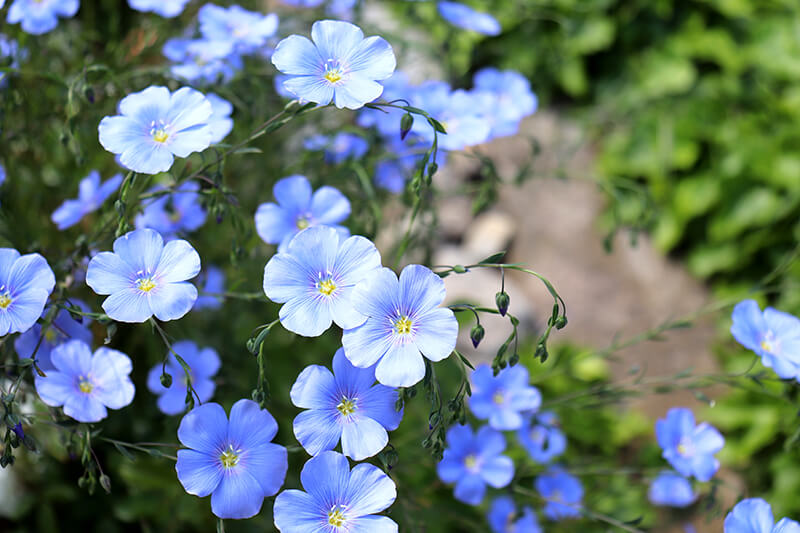
Also another commonly blue plant, it’s mostly known for its linseed oil also called flaxseed oil. They symbolize domestication being given to newlyweds honoring their new home in addition to symbolizing wisdom and righteousness. This perennial only grows in Spring commonly in zones 3 -9 best in sandy, well-drained soil. It’s also a low-maintenance plant needing low watering habits, best results in full sunlight.
20. Morning Glory (Ipomoea)
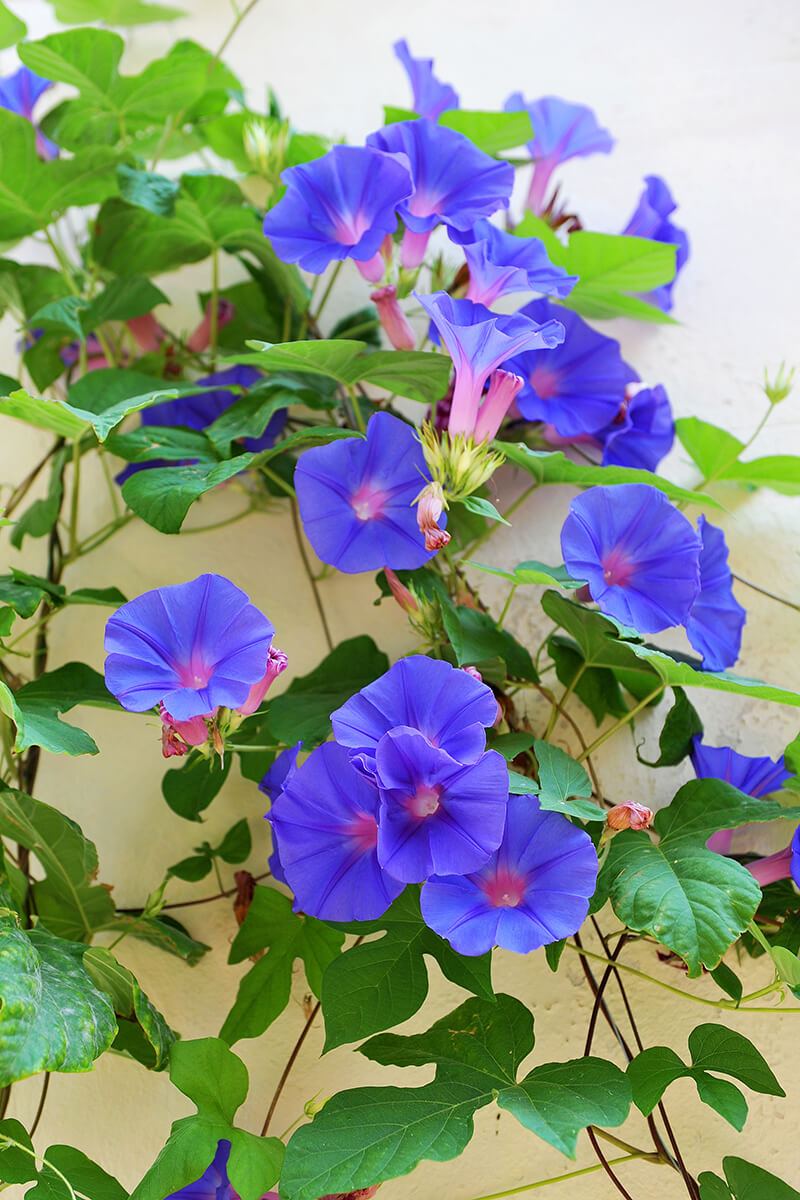
A unique funnel-shaped flower attracting hummingbirds and other pollinators as herb-like plants, climbers, shrubs and trees. It’s seeds produce a harmfully toxic chemical similar to LSD having hallucinogenic properties. The flower itself has been used medicinally for various purposes and food ornamentation. It means either love or mortality. It’s also a versatile plant type namely annuals, climbers, perennials, shrubs, and trees. Growing in zones 2 – 11 and being low maintenance with normal watering, it’ll grow in any type of well-drained soil as long as there’s full sunlight. The seasons of growth are Spring, Summer, and Autumn.
21. Bellflower (Campanula)
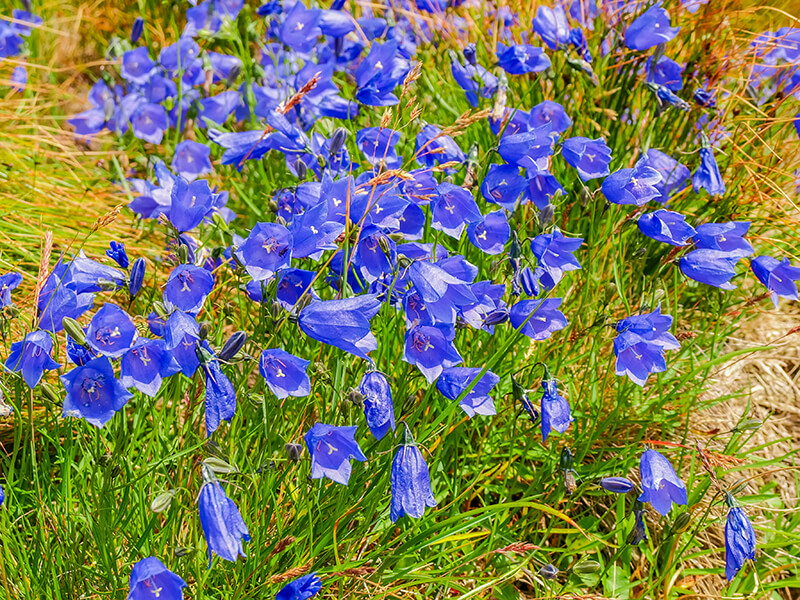
Known for its distinctive bell-like shape, it’s also associated with death and is often planted on graves. The plant can be extremely robust in its growth and has the potential to become encroaching. The entire plant is edible and even nutritious supposedly rich in Vitamin C. This blue flower plant represents gratitude, humility, beauty, and everlasting love. Thriving in full and/or partial sunlight, it prefers rich, well-drained soil for optimal growing with average watering and is low maintenance. Also growing in zones 3 – 9 during Spring through Autumn seasons.
22. African Lily (Agapanthus)
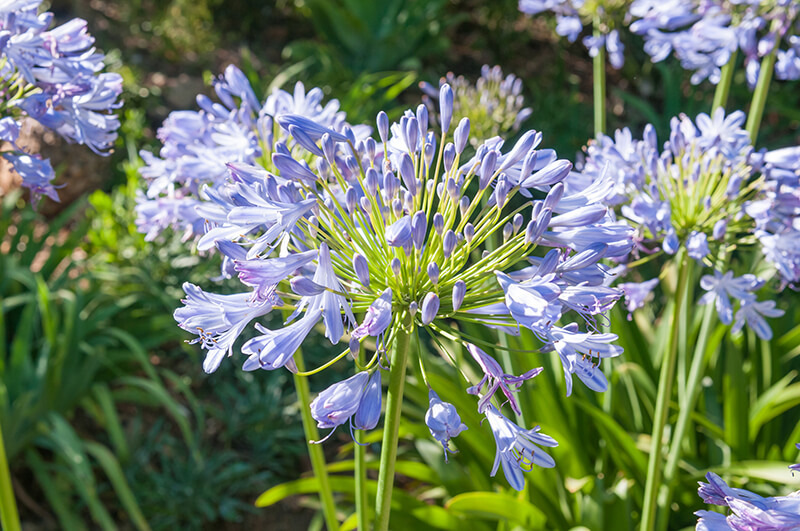
Also called Lily of the Nile, its funnel-shaped clusters are also known as the Flower of Love. In Africa, it’s also considered an aphrodisiac. It was also used medicinally. As a cut flower, it’ll last over a week in a vase of water. It symbolizes love, fertility, purity, and beauty. Considered plant type of bulbs, and perennials, they bloom in Autumn and Summer In zones 6 – 11 growing best in fertile, moist, and well-drained soil. It can grow in acid, neutral, and alkaline soils. Most successful growth is in full and/or partial sunlight, also with average watering, and is low maintenance.
23. Himalayan Blue Poppy (Meconopsis Betonicifolia)
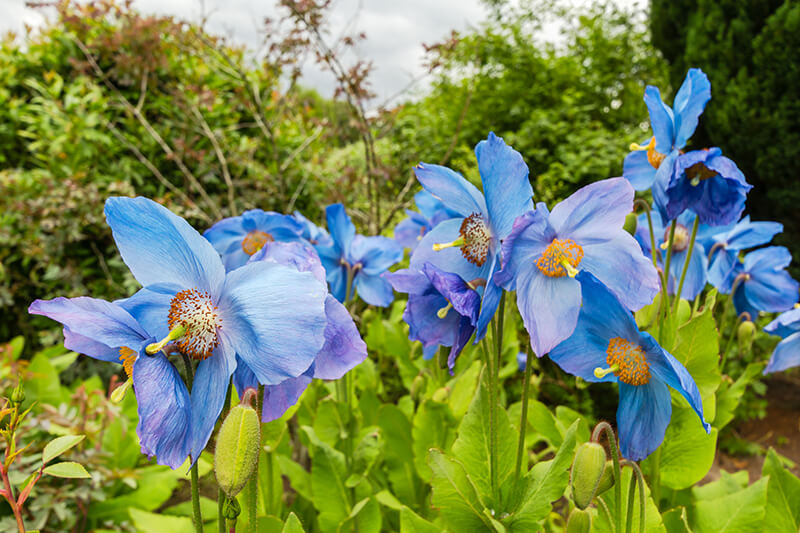
Another rare type of blue flower, it’s native to Tibet and is the national flower of Bhutan. Interpreted as a symbol of potential, possibilities, this perennial needs a rich, moist but well-drained, slightly alkaline to slightly acid soil. The zones are 7 – 8 in partial sun and bloom in late Spring to early Summer.
24. Blue Sweet Pea (Lathyrus)
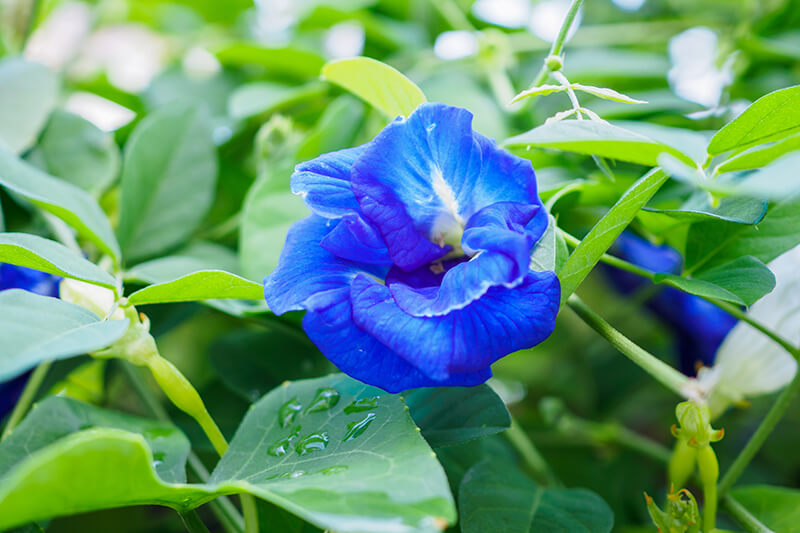
A different type of blue flower, fragrant butterfly-shaped flower is mainly native to the Mediterranean region. The seeds of the plant are poisonous and should not be consumed raw causing a serious neurological disease known as “lathyrism” that can lead to total paralysis and brain damage. They would have to be boiled and soaked to render them edible. It symbolizes gratitude and happiness and doesn’t require much upkeep. They are versatile as Annuals, Climbers, and Perennials. The zones are 2 – 11 needing full sun and blooming in Spring, Summer, and Autumn growing in moist and well-drained soil, and will survive in acid, alkaline, and neutral soil.
25. Birdbill Dayflower (Commelina Diffusa)
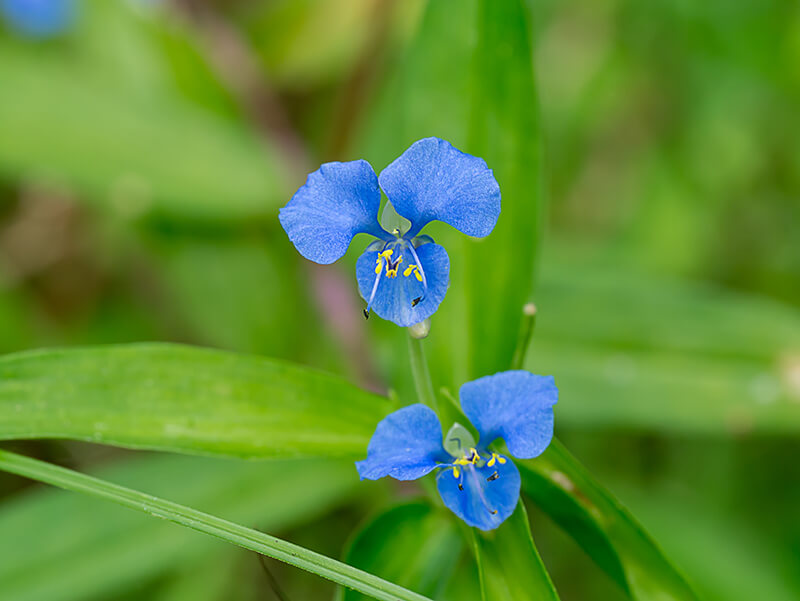
Resembling a small orchid, the flowers open in the morning but wither by mid-day. It’s native to the south-western US namely Arizona, Colorado, New Mexico, Texas, and northern Mexico. As a perennial, the birdbill dayflower grows on relatively dry well-drained slopes thriving in Summer. This flower is another considered a funeral flower.
26. Pincushion Flower (Scabiosa)
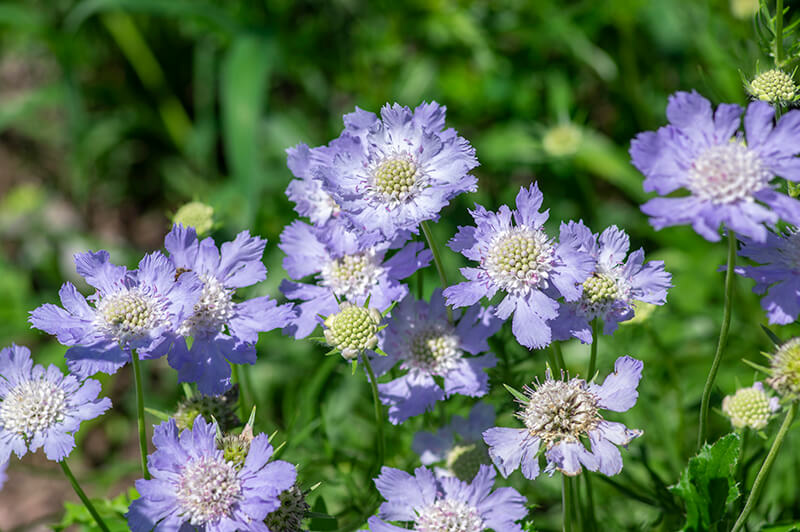
Having a pincushion-like appearance, the flower’s native to Africa, Europe, and Asia. The cut flowers look nice in arrangements too. It is a nectar-rich flower favored by people and bees alike. It was believed to cure scabies, a highly contagious parasitic skin infection caused by the itch mite. This flower is a symbol of love, purity and peace. Its genus includes both annuals and perennials and is easy to grow, not requiring much by way of upkeep. The zones are 3 – 9 needing full sun and blooming in Autumn, and Summer growing best in rich soil with proper drainage and can be grown in soils with a pH range from 5.0 to 7.5.
27. Blue Lupine
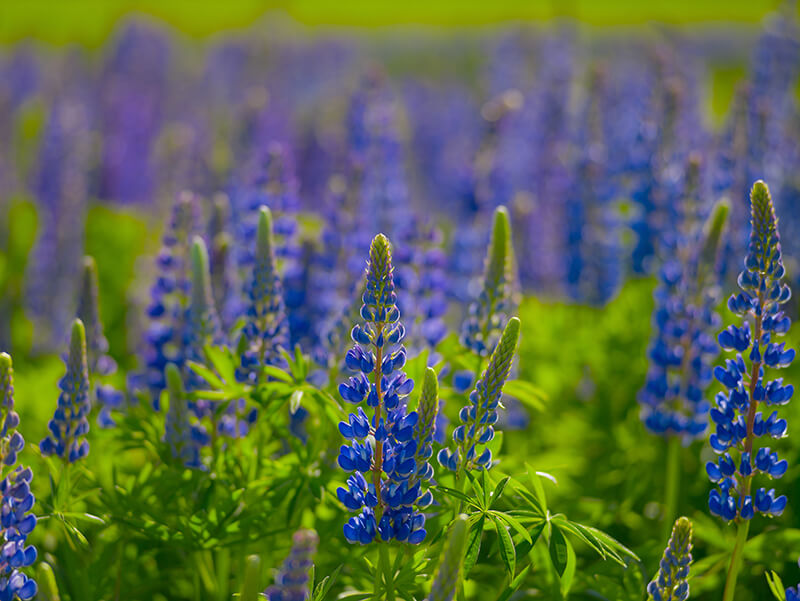
Native to the Mediterranean, North Africa, Australasia, and the Americas, these have a pea-like appearance. Australia is the world’s largest producer and exporter of the plant. Historically, the seeds have been used as food. Both annual and perennial species symbolize happiness, creativity, and imagination. They also don’t require much maintenance. The zones are 4 – 8 needing full and/or minimal sun blooming in Spring, and Summer growing best in well-drained, neutral to slightly acidic soil with an ideal pH between 5.5 and 7.0.
27 Ways to Make Your Garden Bloom with Blue Flowers
There are countless options going far beyond, all that was described here, but this will allow you to get started with expanding your horticultural horizons. When spending time in your garden, looking at your landscape, or revising your home decor, you now have other alternatives to consider. Don’t limit yourself, but take full advantage. Azure accents add a sophisticated level of pop to your home decor. Step out of your comfort zone and try something new to even brighten up that drab workspace! Give yourself the opportunity to embrace changes you may not be used to. It’s just possible that it can change your outlook dramatically!

